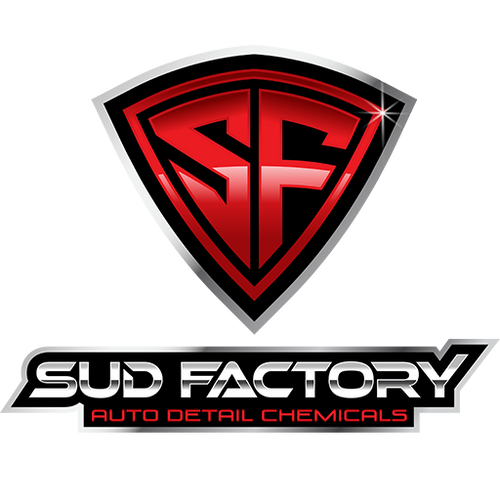Overview
Waxing is essential for protecting your vehicle's paint, enhancing shine, and reducing scratches, while it complements advanced solutions like ceramic coatings. Regular waxing (every three months) improves aesthetics and provides a barrier against environmental damage. Understanding the differences between waxing and ceramic coatings helps in choosing the best protection strategy for your car.
Frequently Asked Questions
1. What is waxing, and how does it protect my car?
2. How often should I wax my car?
3. Is waxing necessary if I have a ceramic coating on my car?
4. What are the main benefits of waxing a vehicle?
5. How does waxing compare to ceramic coating in terms of longevity?
Car owners always seek the best ways to protect their vehicle's exterior and keep it looking shiny and new. While many turn to modern solutions like ceramic coating, it's essential not to overlook the role of waxing in the overall paint protection strategy. In this article, we will delve into how waxing works, its benefits, and how it complements advanced protection methods like ceramic coatings.
Understanding the Basics of Waxing
Waxing is an age-old method that many car enthusiasts swear by. It involves applying a coat of wax, usually made from natural or synthetic materials, onto the surface of the car. This thin layer acts as a barrier against environmental contaminants such as dirt, UV rays, bird droppings, and road salts. Typically, wax can be applied by hand or machine, allowing for optimal application control.
Why Waxing is Important for Paint Protection
While ceramic coatings provide long-lasting protection, waxing serves several key purposes:
- Enhances Gloss and Shine: Wax adds a beautiful layer of brilliance, enhancing the car's overall aesthetics.
- Reduces Surface Scratches: The wax barrier helps to diminish the appearance of minor scratches and imperfections.
- Water Beading: Wax simplifies the washing process as it forms a hydrophobic layer that encourages water to bead off.
- Ease of Application: Wax can be applied at home without special equipment, making it accessible for every car owner.
Wax vs. Ceramic Coating
This is a common question among car enthusiasts—should you choose waxing or go for ceramic coating? It’s crucial to understand that both methods serve distinct purposes in paint protection.
Longevity of Protection
Ceramic coatings are known for their durability, lasting from two to five years depending on maintenance and environmental conditions. In contrast, traditional wax typically lasts only a few weeks to a few months due to various external factors like rain, sun, and pollution. Therefore, while wax offers immediate shine and protection, it needs to be reapplied regularly.
Performance
Ceramic coatings outperform wax in many areas, including chemical resistance, UV protection, and durability against scratches. However, wax still holds its own advantage when it comes to ease of application and providing a high-shine finish.
How to Properly Wax Your Vehicle
If you decide that waxing is the right choice for you, proper application is vital for achieving optimal results. Here’s a step-by-step guide to waxing your vehicle effectively:
- Wash Your Car: Start by thoroughly washing your car to remove dirt, grime, and any old wax. Use a pH-balanced car shampoo for best results.
- Dry Completely: Ensure your vehicle is completely dry before applying the wax. This helps to avoid water spots.
- Choose the Right Wax: Whether you prefer a paste, liquid, or spray wax, select one that suits your needs. Always check for compatibility with any existing ceramic coating.
- Apply Wax: Use a clean applicator pad and apply the wax in small sections. Circular motion is often recommended to ensure even coverage.
- Buff the Wax: After letting the wax set for the recommended duration, use a clean microfiber cloth to buff the surface. This enhances shine and ensures a smooth finish.
Integrating Waxing with Ceramic Coating
If you've opted for a ceramic coating on your vehicle, you may be wondering how waxing fits into the equation. Here’s how you can integrate the two for maximum efficiency:
Layering Techniques
While it’s not standard practice to wax over a ceramic coating, a specific type of wax designed for use with ceramic coatings can enhance shine and add a layer of protection if necessary. Always consult the ceramic coating manufacturer before proceeding to ensure compatibility.

Periodic Maintenance
Even with a ceramic coating, using a quality wax occasionally can help maximize the hydrophobic properties and shine of the coating. It can also fill in minor imperfections that might appear over time, keeping your vehicle looking its best.
Factors That Contribute to Paint Damage
Understanding what might damage your car's paint will help you appreciate the importance of regular waxing and protection:
- UV Rays: Continuous exposure can lead to oxidation and fading.
- Acidic Contaminants: Bird droppings, tree sap, and bug splatter can etch into the paint if not removed promptly.
- Scratches and Swirls: Daily use can lead to micro scratches from dirt and debris, affecting the paint's gloss.
- Environmental Pollution: Road salts, dust, and debris can accumulate, leading to potential surface damage.
How Often Should You Wax Your Car?
Many factors affect how often you should wax your vehicle, including the climate, driving conditions, and whether your vehicle is garaged. Generally, a good rule of thumb is to wax every three months for most drivers. However, if you live in a harsh climate or use your vehicle frequently, you may need to wax more often to maintain that protective layer.
Tips for Choosing the Best Wax
As you consider the best wax to use on your vehicle, here are some key factors to keep in mind:
- Type of Wax: Decide between natural and synthetic wax based on your needs. Natural waxes, like carnauba, offer a rich shine but require more frequent application.
- Compatibility: Ensure that the wax you choose is suitable for the existing ceramic coating or any other protective sealant you have in place.
- Easy Application: Some wax products are designed for easy application, so consider your skill level and time available for the job.
Maximizing Protection Beyond Waxing
While waxing offers significant benefits, you can do even more to extend your vehicle's longevity. Combining regular waxing with other protective measures can create a comprehensive defense.
Routine Maintenance
Regular washing and detailing are essential for protecting your vehicle's paint. Always use pH-balanced products, soft cloths, and a two-bucket wash method to minimize scratches.
Applying a Ceramic Coating
If you haven’t done so already, investing in a ceramic coating is an invaluable long-term solution for paint protection. This advanced technology not only enhances the gloss but also serves as a formidable barrier against contaminants.
Parking Choices Matter
If possible, park your vehicle in a garage or shaded area to reduce sun damage and limit exposure to environmental pollutants that can cause paint degradation.
In Conclusion: Elevate Your Vehicle’s Beauty and Longevity
Waxing plays a crucial role in vehicle paint protection and should not be overlooked in the era of advanced solutions like ceramic coating. Whether you want that extra shine before a car show or daily protection from the elements, wax works in harmony with ceramic coatings to keep your vehicle looking immaculate. So, embrace the art of waxing, and give your car the care it deserves to stand out on the road!
Linked Product

HybridCoat Graphene + Ceramic 10H Ultra Glossy Protective Coating
The HybridCoat Graphene + Ceramic 10H Ultra Glossy Protective Coating offers a strong protective layer that combines the benefits of both ceramic and graphene oxide. Its hydrophobic properties help repel water and dirt, making it easier to maintain your vehicle's appearance over time. This product is particularly useful for enhancing paint protection after waxing, providing an additional level of durability and shine.
View Product








